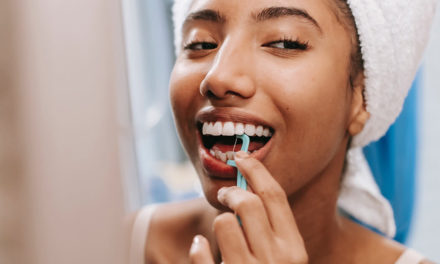A veneer is a wafer-thin shell with which is firmly and permanently glued to the tooth. Veneers serve to beautify the smile. There are two main types of material used to fabricate a veneer: composite and dental porcelain. Veneers from dental porcelain are manufactured in dental laboratories, whereby a dental technician will carry out delicate work in producing the thin shell. The resulting veneer is high individualized, stability and aesthetic.
How do veneers beautify my “next smile”?
As a rule of thumb, veneers are generally used for aesthetic purposes, including to correct minor blemishes on the front teeth. The shells can be used to improve the appearance of chipped, worn down or broken teeth, or to hide discoloration (caused perhaps by root canal therapy, or stains from tetracycline or other drugs). The results are generally highly impressive, leaving the patient with even and naturally looking teeth and an a beautiful smile.
Do veneers look like artificial teeth?
Veneers are designed to look inconspicuous and beautiful. The materials used offer light-optical properties (tooth color) that are a very close match to natural teeth. In consultation with the dentist, the dental technician creates an individual “design” for the anterior teeth and fits the shells in ordered colors which blend with those of neighboring teeth, or according to the patient’s request. A talented dental technician will make veneers that take into account many patient-related criteria, such as facial expressions, phonetics, aesthetic parameters, resulting in a natural looking, beautiful result.
Are healthy teeth damaged for the veneers?
The dental technician uses high-quality, bio-compatible materials when creating veneers. With an exact fit, neither the gums nor teeth should be damaged in any way. In order to bond a veneer permanently and aesthetically on the tooth, in in most cases, some tooth structure is removed. As the shells are so thin, they can still appear bulky if bonded to an unprepared tooth. Therefore it is often necessary to remove some of the tooth enamel to accommodate their width. Leading dentists will use precise techniques in order to do this.
Leading dentists will use precise techniques in order to remove some of the tooth enamel to accommodate their width.
How long does veneers fron dental porcelain last?
Veneers are very thin and fragile – on average, a veneer is only 0.5 mm thick. The shell gets its actual strength after gluing to the tooth. With care, veneers can last over ten years.
On average, a veneer is only 0.5 mm thick. But with care, veneers can last over ten years.
How are the veneers made?
First, there is an aesthetically functional planning. For this purpose, the dental technician creates a preview of the new smile in consultation with the dentist and the patient. This can be done digitally with modern technologies. It is based on digital portrait photos as well as intraoral photos or a three-dimensional image of the face (facescan). The ideal image of the teeth is designed in software and coordinated with the patient. Design, size, shape, position … the smile is designed individually. Alternatively, the procedure can also be carried out manually. The experienced dental technician can create a new smile with fine craftsmanship.
After planning, the dentist removes a thin layer of the enamel. The teeth prepared in this way are molded with an impression and the information is sent to the dental laboratory. In close consultation with the patient, the the dental technician produces the veneers with a high degree of precision. Once these shells come back from the laboratory, the dentist will fit them in the patient’s mouth. The dentist does this by bonding the veneers to the tooth with a composite plastic adhesive. It is essential that the dentist does this with a high degree of precision. Improper fastening can cause discoloration, marginal gaps, fractures or veneers falling out earlier.
Are veneers also suitable for me?
Certain patients make less ideal candidates for a successful veneers treatment. For example, those who grind their teeth or have a habit of chewing objects are more likely to cause damage to their veneers. In addition, patients with poor oral hygiene should avoid veneers as well. Finally, those who play contact sports such as martial arts should delay treatment until they have retired from the sport! It is best to contact a dentist – a specialist in aesthetics and function. Ask him about your next smile with veneers.





